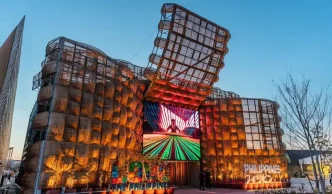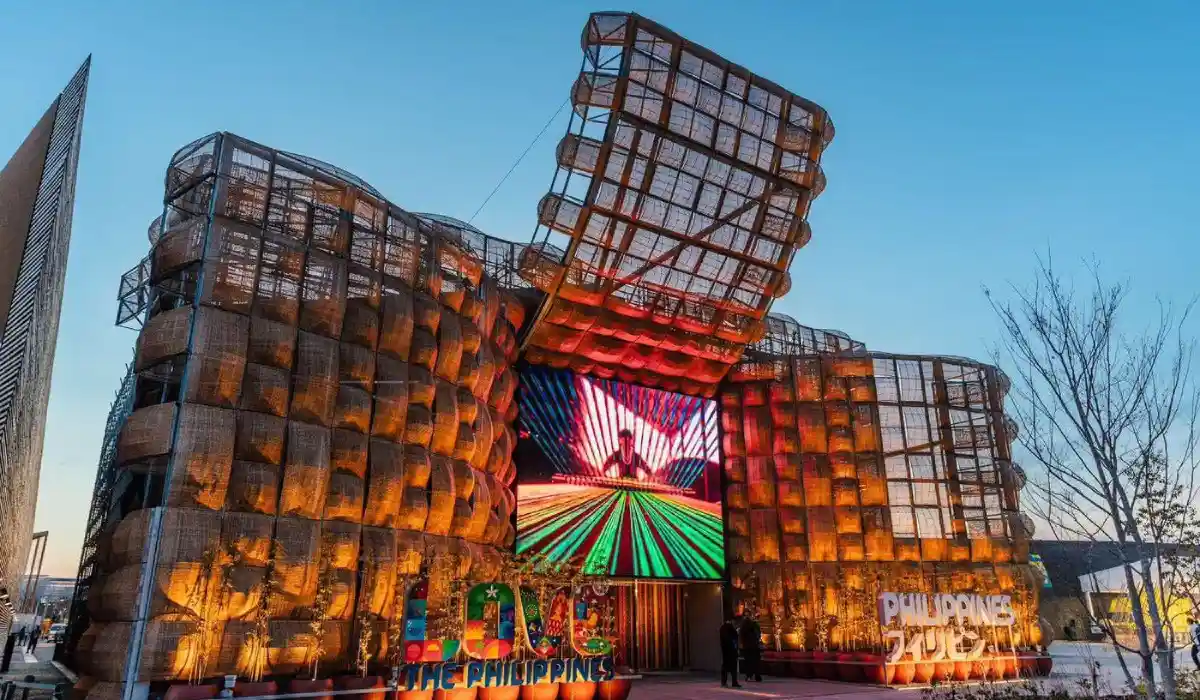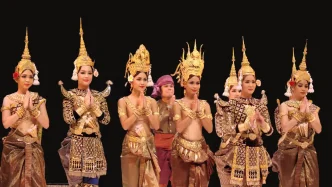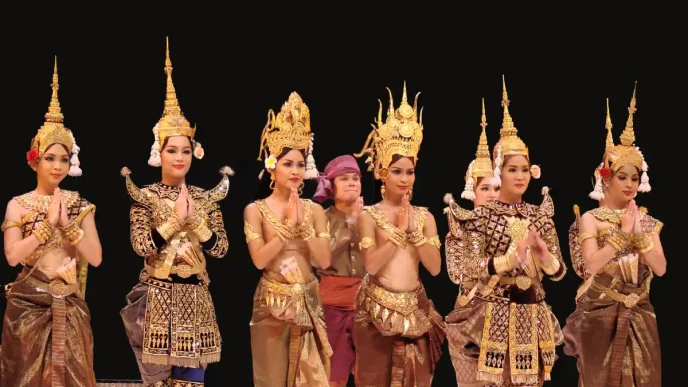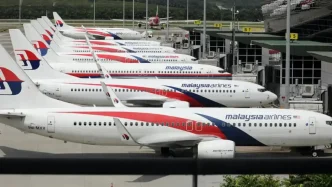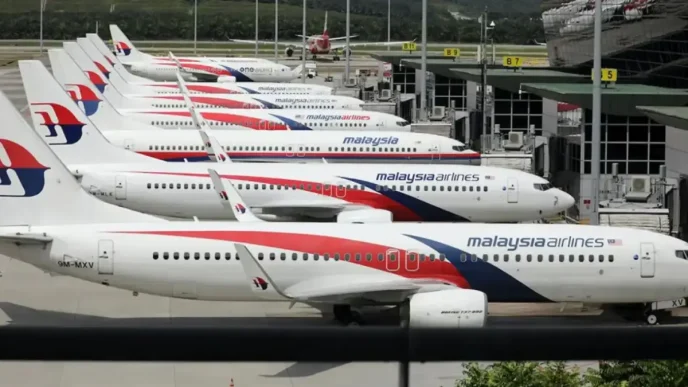Philippine President Ferdinand Marcos Jr. has traveled to Japan to officially inaugurate the Philippine Pavilion at the Expo 2025 Osaka, a global event showcasing cultural and technological achievements. The visit, which began on June 20, 2025, underscores the Philippines’ efforts to promote its rich heritage and stunning landscapes on an international stage, with a particular focus on boosting tourism. Beyond the pavilion’s opening, Marcos is set to engage with business leaders and connect with the Filipino diaspora in Japan, highlighting the multifaceted goals of his trip.
A Showcase of Philippine Culture
The Philippine Pavilion at Expo 2025, held in the city of Osaka, offers a vibrant display of the country’s cultural diversity and natural beauty. According to a statement from Palace Press Officer Claire Castro, the pavilion features elements that highlight “our rich culture and our beautiful landscapes.” This initiative aligns with the government’s broader strategy to position the Philippines as a premier tourist destination, capitalizing on international events like the Osaka Expo to attract global visitors. The expo, which opened earlier in 2025, has already drawn millions of attendees, with pavilions like Spain’s attracting long queues of visitors eager to experience cultural performances and exhibits, as reported by AFP on May 21, 2025.
The pavilion’s design and programming aim to reflect the Philippines’ unique blend of indigenous traditions, colonial influences, and modern dynamism. While specific details of the exhibits remain undisclosed, such displays typically include interactive installations, traditional crafts, and promotional materials showcasing destinations like Palawan, Cebu, and Boracay. By presenting these attractions at a high-profile event like Expo 2025, the Marcos administration hopes to draw attention to the country’s tourism potential, an industry that contributes significantly to the national economy.
Boosting Tourism and Economic Ties
Tourism remains a critical pillar of the Philippine economy, with the sector accounting for a substantial share of GDP and employment. In recent years, the government has ramped up efforts to recover from the downturn caused by global travel restrictions, promoting both domestic and international tourism through campaigns and infrastructure investments. The inauguration of the Philippine Pavilion at Osaka Expo 2025 is a strategic move in this direction, targeting the Japanese market, which has historically been a significant source of visitors to the Philippines.
Beyond tourism, Marcos’ visit to Japan includes meetings with business leaders, signaling an intent to strengthen economic ties between the two nations. Japan is a key trading partner and investor in the Philippines, with interests spanning manufacturing, technology, and infrastructure development. While the exact agenda of these discussions has not been publicized, such engagements often focus on fostering investments and exploring collaborative projects. The presence of a small, unnamed delegation accompanying the President suggests a targeted approach to these talks, possibly involving high-level officials or industry representatives.
The economic dimension of the trip is particularly significant given the Philippines’ ongoing efforts to diversify its economic partnerships in the region. Japan’s role as a major donor of development aid and a source of foreign direct investment makes it a critical ally. Analysts suggest that Marcos may use this opportunity to discuss potential collaborations in sectors like renewable energy and digital innovation, areas where Japan has considerable expertise.
Engaging the Filipino Diaspora
Another key objective of Marcos’ visit is to connect with the Filipino community in Japan, a group that numbers in the hundreds of thousands and plays a vital role in both countries’ economies through remittances and cultural exchange. Many Filipinos in Japan work in sectors such as healthcare, hospitality, and education, often facing challenges related to integration and labor rights. Presidential visits to diaspora communities typically involve town hall meetings or cultural events, providing an opportunity for the government to address concerns and reinforce ties with overseas Filipinos.
The engagement with the Filipino community also serves a domestic political purpose. By visibly supporting Filipinos abroad, Marcos reinforces his administration’s commitment to the welfare of overseas workers, a significant voting bloc and a source of national pride. This aspect of the trip, though less publicized, underscores the broader narrative of national unity and global representation that the President seeks to project through his presence at Expo 2025.
Logistics and Domestic Arrangements
Marcos departed Manila shortly after noon on June 20, 2025, arriving in Japan at 6:05 p.m. local time aboard a private aircraft, as reported by Presidential Communications Office Undersecretary Michael Ubac. Unlike his usual foreign trips, which are preceded by detailed predeparture briefings, this visit was announced through a press briefing on Thursday afternoon, according to Malacañang. The brevity of the announcement and the lack of specifics regarding the delegation’s composition have raised questions about the trip’s planning and transparency, though no evidence suggests any irregularity.
In the President’s absence, Executive Secretary Lucas Bersamin, Agrarian Reform Secretary Conrado Estrella III, and Education Secretary Sonny Angara have been designated as caretakers of the executive branch. This arrangement ensures continuity in governance during Marcos’ brief stay in Japan, with his return scheduled for Saturday, June 22, 2025. The designation of multiple caretakers reflects a cautious approach to maintaining administrative stability, particularly given the short duration of the trip.
Context of Expo 2025 Osaka
Expo 2025 Osaka, themed around designing future societies for sustainable living, provides a global platform for countries to showcase their cultural and technological advancements. Hosted in Japan’s second-largest city, the event builds on the legacy of previous expos, such as the 1970 Osaka Expo, which marked a turning point in Japan’s post-war economic recovery. For participating nations like the Philippines, the expo offers a unique opportunity to gain visibility and forge connections with other countries and international organizations.
The Philippine Pavilion’s presence at the expo is not merely symbolic; it represents a calculated effort to project soft power and attract economic opportunities. Similar pavilions from other Southeast Asian nations, such as Thailand and Vietnam, are also expected to emphasize cultural heritage and tourism, creating a competitive environment for visitor attention. Early reports from the expo indicate strong interest in cultural displays, with images of visitors queuing at pavilions like Spain’s suggesting that the Philippine Pavilion could draw significant crowds if marketed effectively.
Broader Implications for Philippine Diplomacy
Marcos’ participation in Expo 2025 Osaka fits into a larger pattern of active diplomacy aimed at elevating the Philippines’ international profile. Under his administration, the country has sought to balance relations with major powers like the United States, China, and Japan while asserting its role within the Association of Southeast Asian Nations (ASEAN). Japan, as a close ally and a member of the G7, offers a strategic partnership that can support the Philippines in areas ranging from security cooperation to economic development.
Moreover, the focus on tourism and cultural exchange during this visit aligns with global trends emphasizing sustainable and people-centered development. By highlighting the Philippines’ natural and cultural assets, Marcos is positioning the country as a key player in the global tourism industry, which is increasingly seen as a driver of sustainable growth. If successful, initiatives like the Philippine Pavilion could pave the way for long-term benefits, including increased tourist arrivals and foreign investment.
Looking Ahead
As President Marcos concludes his visit to Japan, the impact of the Philippine Pavilion at Expo 2025 Osaka will likely be measured in terms of both immediate engagement and long-term gains. Will the pavilion succeed in capturing the imagination of international visitors, translating cultural interest into tangible economic benefits? For now, the event marks a significant moment in the Philippines’ efforts to rebuild and rebrand its global image, with Marcos at the forefront of this ambitious endeavor. Meanwhile, Filipinos in Japan and at home watch closely, hopeful that such initiatives will bring lasting opportunities for growth and connection.

